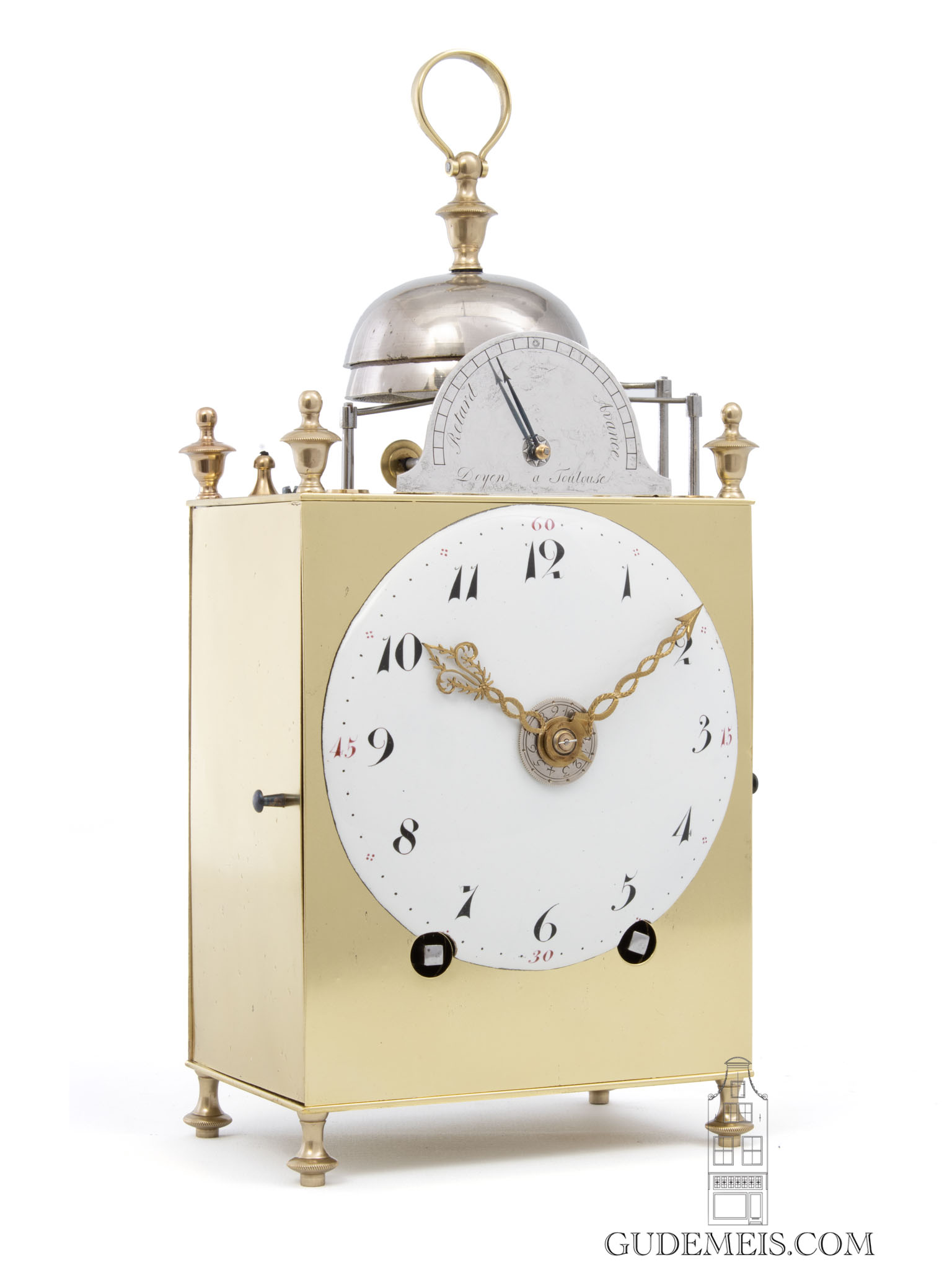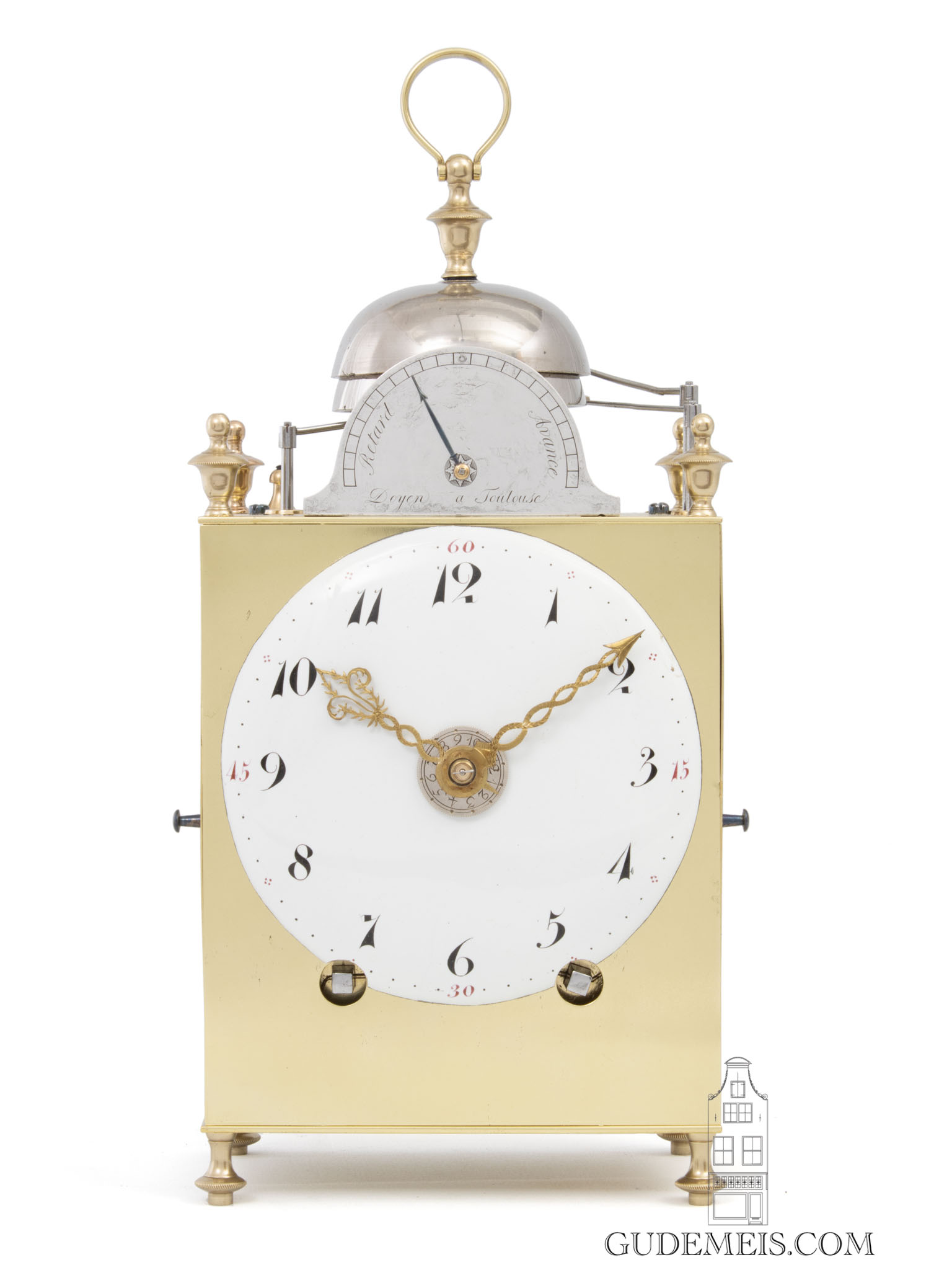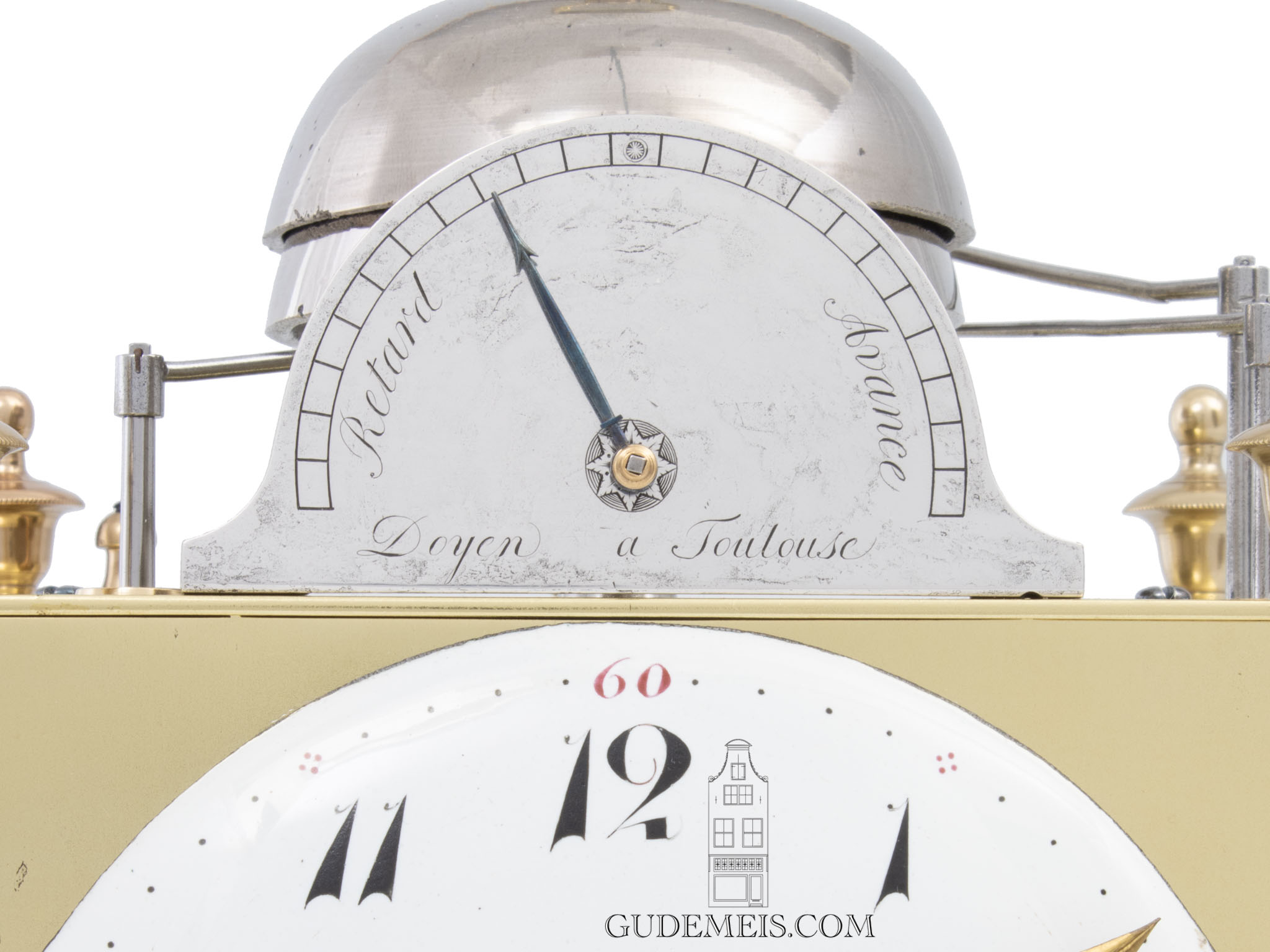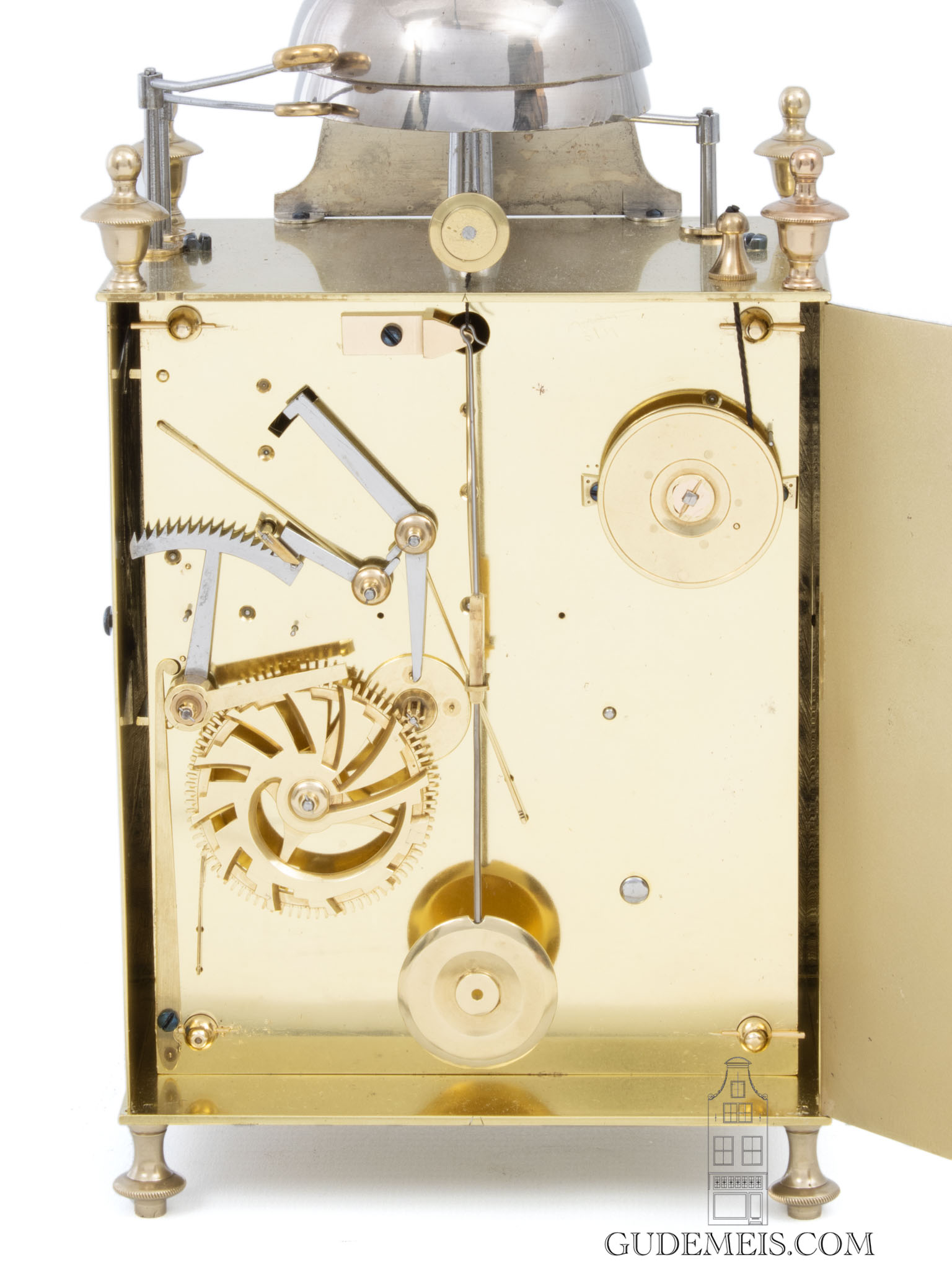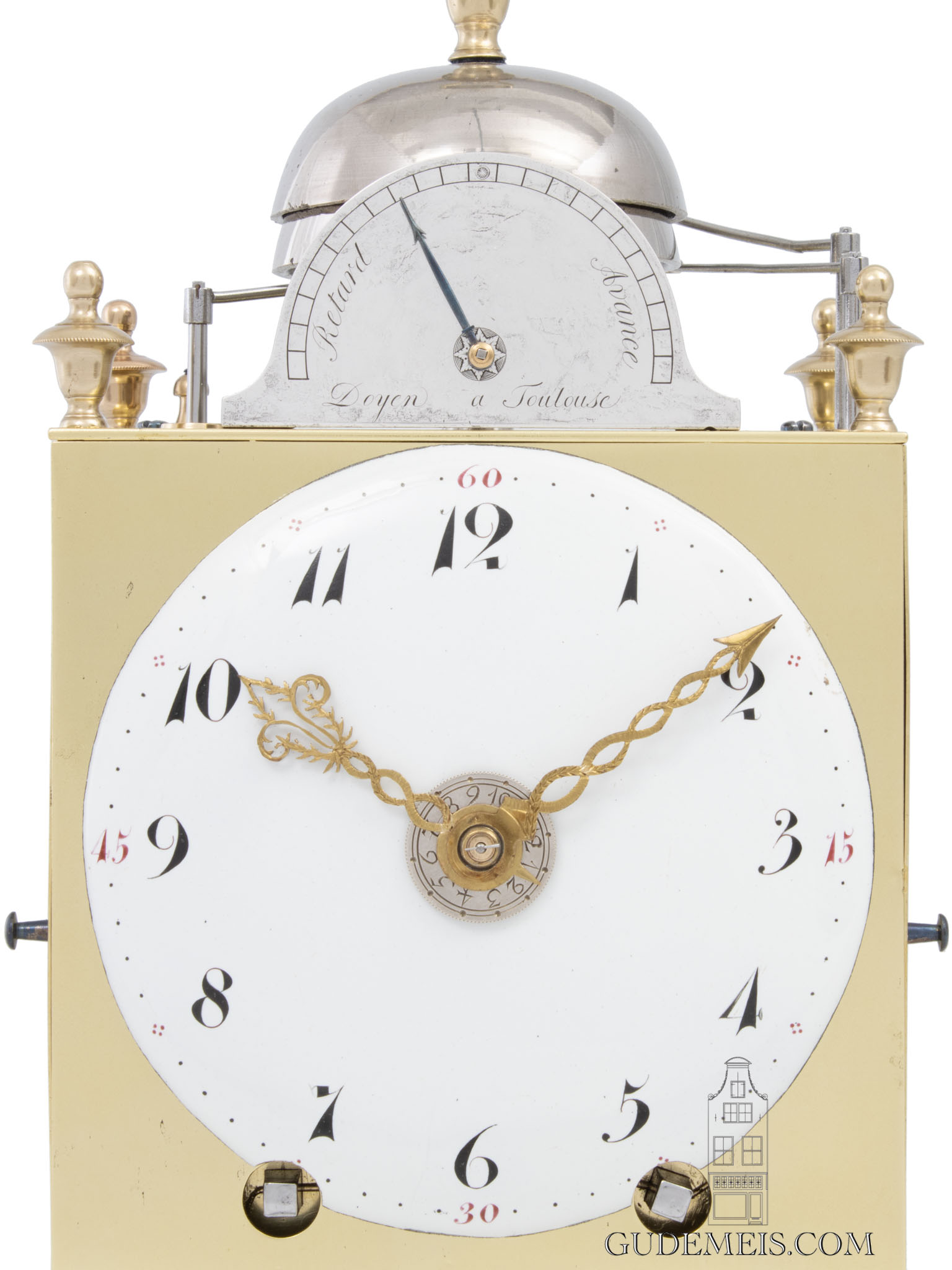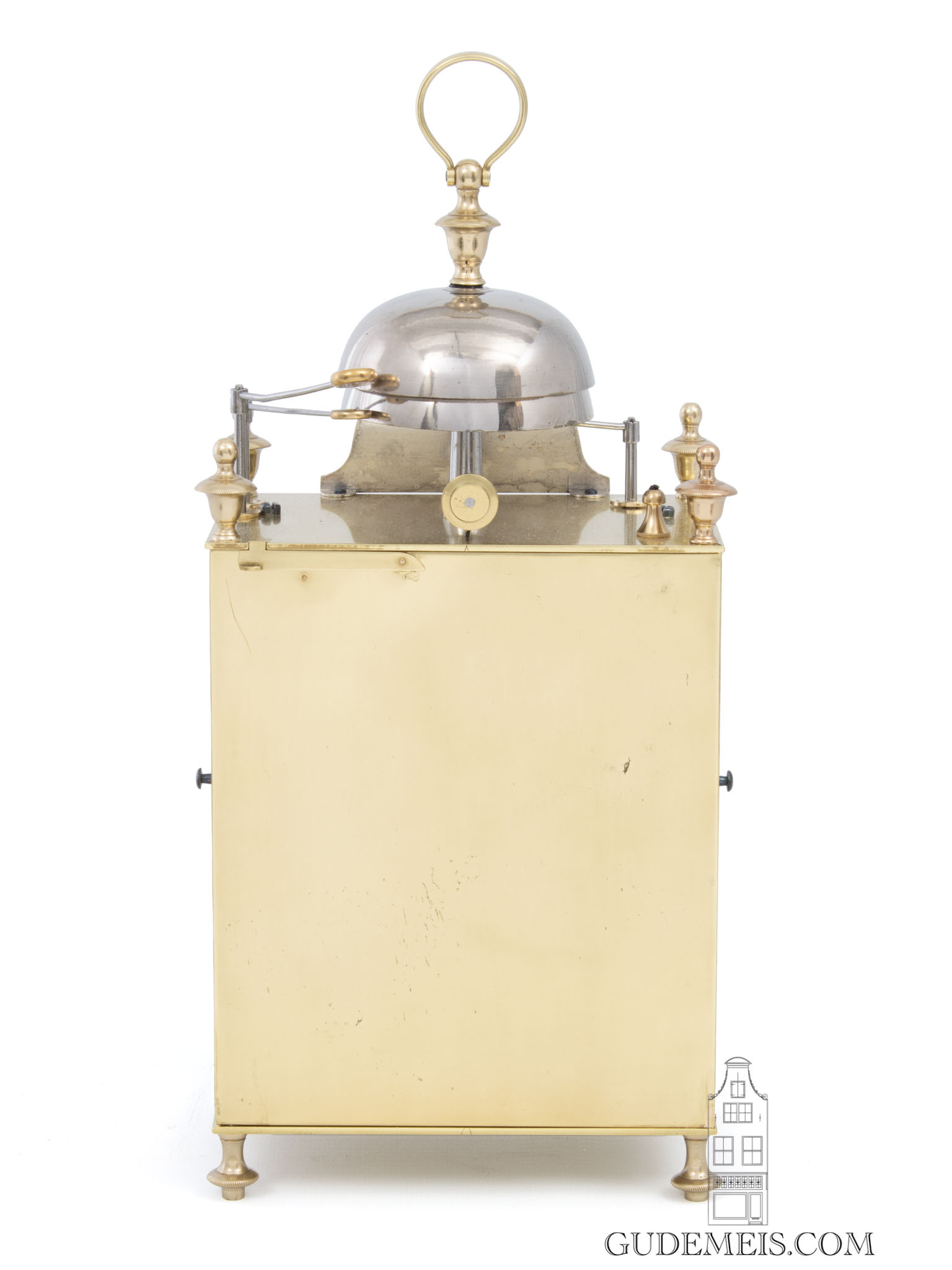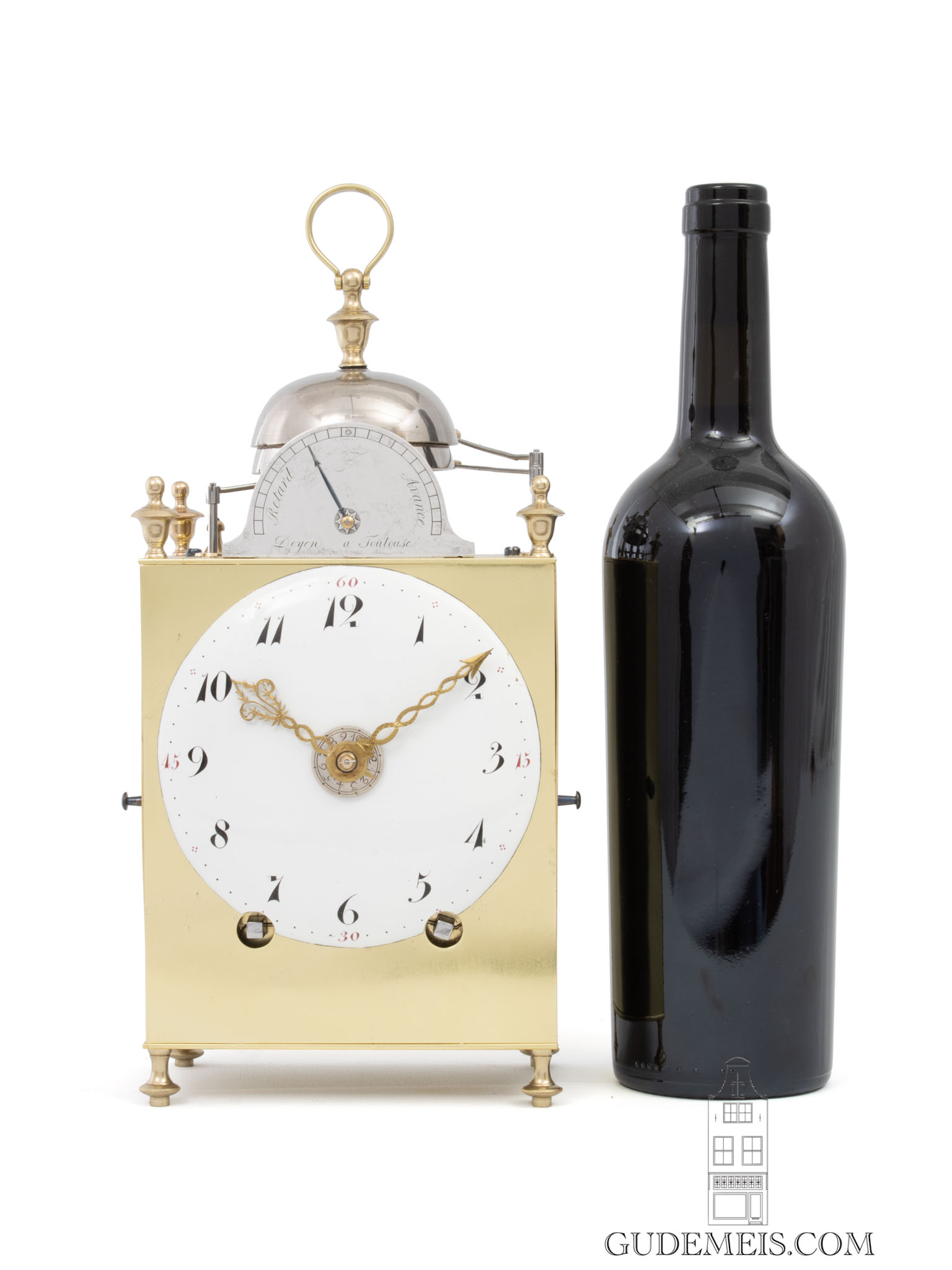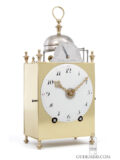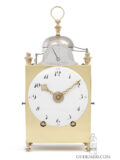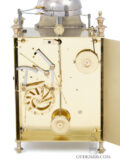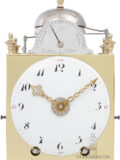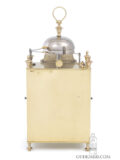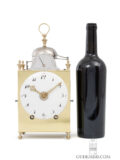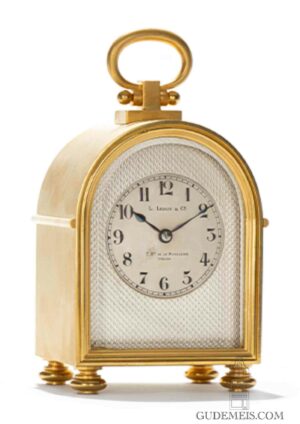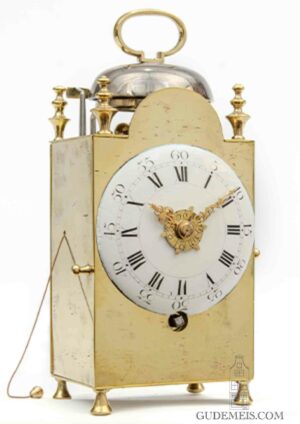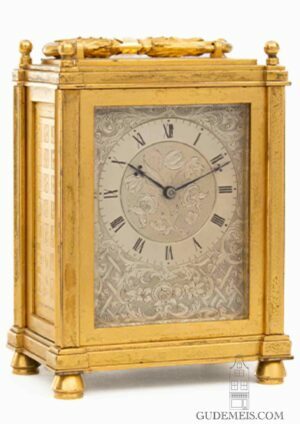A large French quarter striking Capucine travel clock, Doyen a Toulouse, circa 1790.
Description
Capucine
In opposite to the more luxury ‘pendules d’officier’ clocks with their cases of gilt bronze or exotic woods, there were travel clocks made with less expensive cases. This group of clocks we call ‘Capucine’, like the monks of the Capucine order. There are two explanations for the use of this term. The first being that the bell which usually surmounts these clocks bore a resemblance to the hoods of the cowls of the Capucine monks. The second explanation, which seems more logical to me, seeks to compare the austere way of living of this order to the more austere execution of these clocks. These pendules ‘à la Capucine’ look a lot like lantern clocks and just as this type of clock they seems to fit easily into any interior.
This clock belongs to the first generation of Capucines when the production was still small. The design of the dial and hands place this clock firmly in the Louis XVI period. Another typical feature of the early Capucine is the omittance of a bezel. Unusual and individual is the arched silver plate above the dial for the fast/slow regulation. Later when the production became larger and more standardized, these individual features would disappear. This clock also stands out because of it’s larger dimensions and the quarter striking. All in all, a beautiful and early clock.
The dial
The 12-cm enamel dial has black Arabic numerals for the hours and red Arabic numerals for the quarter indication. The brass hands are pierced and engraved and the alarm disc is made of silvered brass. Above the dial is an solid silver arched subsidiary for fast/slow with a blued steel hand. This subsidiary is also signed Doyen a Toulouse.
Quarter striking
The substantial plated movement has a duration of eight days and is driven by two spring barrels. It is regulated by anchor escapement in combination with a silk suspended pendulum. The clock has petite sonnerie quarter striking on two surmounted bells by means of rack striking. Finally the movement has a pull wind alarm that strikes on the larger bell.
Brass case
The rectangular brass case is surmounted by two bells below a handle and with four urn finials at the corners. There are doors to the sides and back giving access to the movement. The whole is raised on four turned feet.
